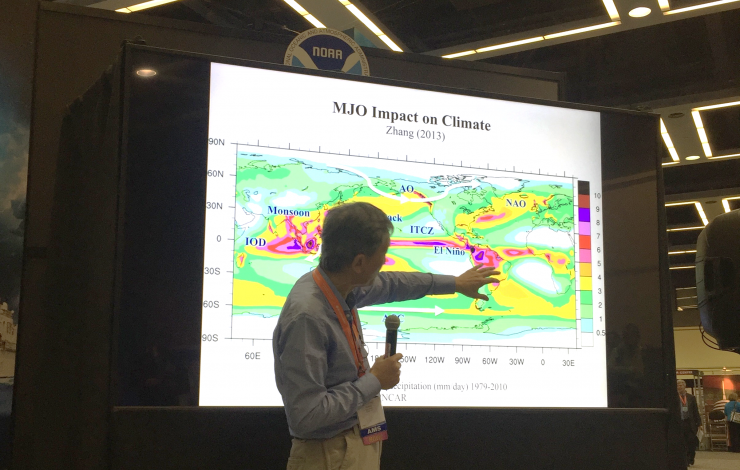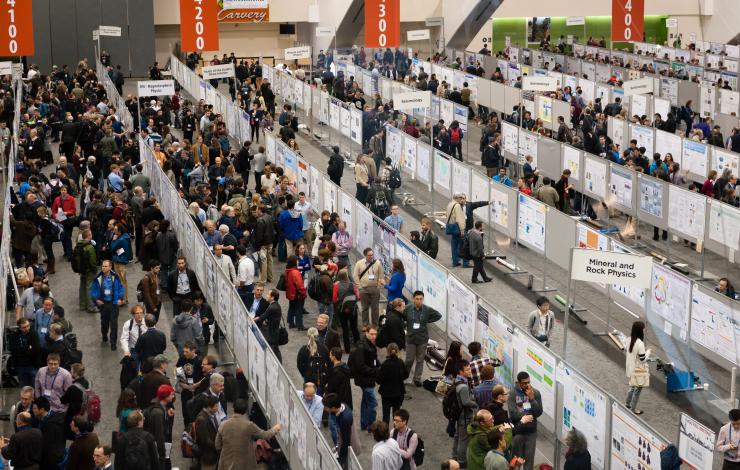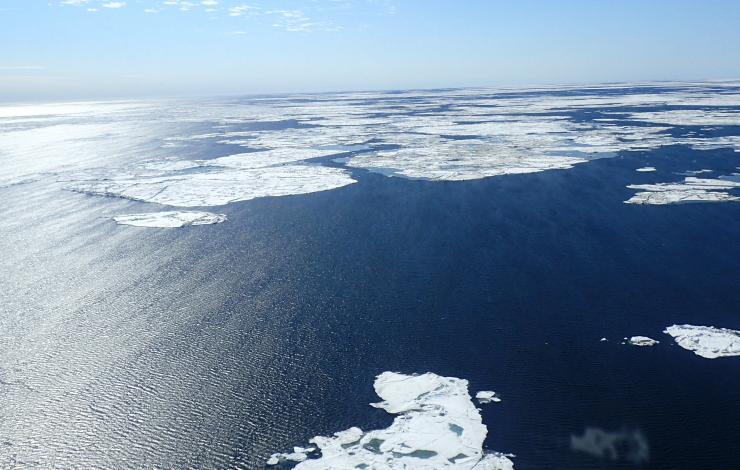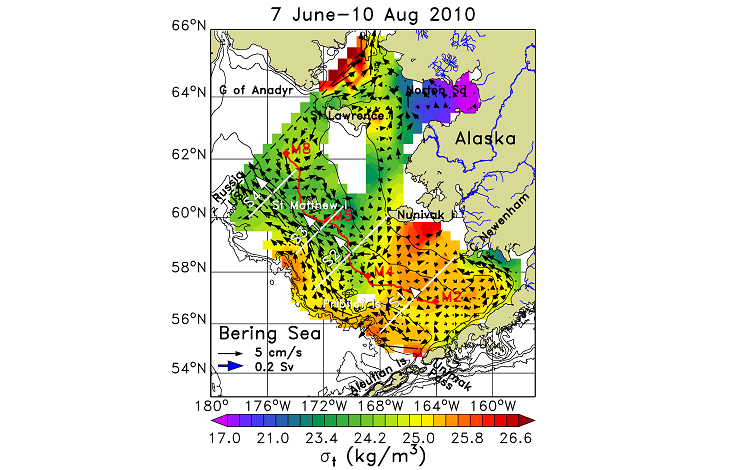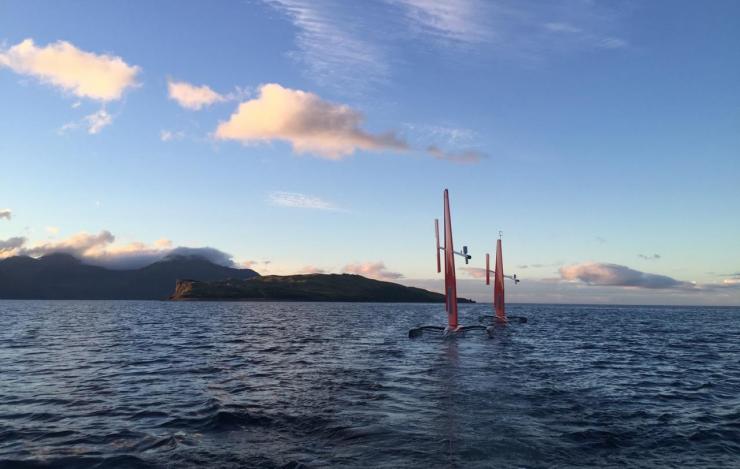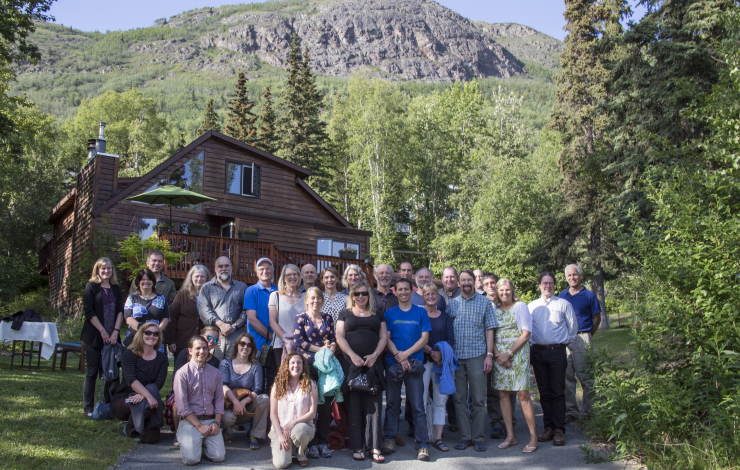What's New Archive
Last week, PMEL scientists attended the American Meteorological Society (AMS)’s Annual Meeting in Seattle, WA and the Alaska Marine Science Symposium (AMSS) in Anchorage, AK. Presentations covered research in the Bering Sea, data management and access, El Nino, sea ice, the Earth's energy imbalance, innovative technologies, and recent warming in the Pacific and others.
At AMSS, the Ecosystems and Fisheries-Oceanography Coordinated Investigations (EcoFOCI) group had multiple presentations and posters on the Bering Sea including topics on the recent marine heat wave in Alaska, linking annual oceanographic processes to contiguous ecological domains in the pacific Arctic, fish distributions, ecology, Saildrone and oceanography.
A wider range of topics were covered at AMS and included invited talks from Nick Bond, Chidong Zhang and Kevin Wood. Dr. Zhang spoke about the Dynamics of the Madden-Julian Oscillation; Kevin Wood presented the Old Weather Project using historical U.S. ship logbooks to collect and analyze historical climate data; and Nick Bond discussed the recent warming in the NE Pacific. The annual meeting is the world’s largest yearly gathering for the weather, water, and climate community and brings together atmospheric scientists, professionals, students, educators and research’s from around the world. AMS is the nation’s premier scientific and professional organization promoting and disseminating information about the atmospheric, oceanic, hydrologic sciences.
Learn more about all our different research themes and groups here.
The 2016 Arctic Report Card was released today, November 13 at the American Geophysical Union’s Fall Meeting. PMEL’s Dr. James Overland is one of three editors of the 2016 Arctic Report Card which brings together the work of 61 scientists from 11 nations to provide the latest information on multiple measures of Arctic environmental change.
Observations in 2016 showed a continuation of long-term Arctic warming trends which reveals the interdependency of physical and biological Arctic systems, contributing to a growing recognition that the Arctic is an integral part of the globe, and increasing the need for comprehensive communication of Arctic change to diverse user audiences.
In the winter and fall months of 2016, new monthly records maximums were recorded. The average surface air temperature for 2016 is by far the highest since 1900. Satellite data also recorded the second lowest minimum sea ice extent at the end of summer and an earlier onset of spring melting in the Greenland ice sheet.
Read the NOAA Press Release here and the complete 2016 Arctic Report Card here.
PMEL scientists, including scientists from the University of Washington's Joint Institute for the Study of the Ocean and Atmosphere (JISAO) and Oregon State University's Cooperative Institute for Marine Resources Studies (CIMRS) are attending the American Geophysical Union (AGU)’s Annual Meeting in San Francisco this week, December 12-16. AGU's Falling Meeting is the largest Earth and space science meeting in the world bringing together the Earth and space science community for discussions of emerging trends and the latest research. Poster and talk topics include data integration, El Nino Southern Oscillation (ENSO), Indian Ocean temperature trends, hydrothermal plumes and vents, carbon dioxide in the tropics and Gulf of Alaska, aerosol research, and heat impacts on marine ecosystems and fisheries, tsunamis, and acoustic research.
The 2016 Arctic Report Card will be released Tuesday morning in conjunction with a press conference led by NOAA’s Jeremy Mathis. The 2016 Arctic Report Card brings together the work of 61 scientists from 11 nations to provide the latest information on multiple measures of Arctic environmental change, including air and sea surface temperature, sea ice, snow cover, vegetation, wildlife, and plankton abundance. Read the full report and highlights here as well as the press release. Watch the recorded press conference here.
Researchers will also present during a press conference Thursday morning some of the first scientific results from the 2015 Axial Seamount eruption including discoveries of previously unknown structures and new glimpses into the volcano’s internal plumbing. These new insights into the world’s most active and well-studied underwater volcano may help scientists better understand all volcanoes and the hazards they pose. Read the press release here. Watched the recorded press conference here.
Dr. Bob Embley from the Earth-Ocean Interactions group will be honored during the Awards Ceremony as part of the 2016 class of Fellows for his pioneering contributions to the understanding of deep-sea volcanism by fostering interdisciplinary investigations with advanced technologies.
A recent perspective piece in Nature Climate Change by Jim Overland at PMEL and other scientists discusses the latest research on whether Arctic warming is fueling more severe winter weather in the mid-latitudes, the temperate zone of the Earth between the tropics and the Arctic, and the part of the United States where most Americans live.
Research conducted by a diverse, international group of scientists agree for the first time that the pattern of severe cold winters in the mid-latitudes is primarily based on the state of the jet stream, which is naturally variable. They also emphasize community coordination for both scientific progress and communication to a broader public. The group of researchers also agreed that there is no simple cause-and-effect relationship between a warming Arctic and an emerging pattern of severe winter weather in the mid-latitudes. It’s much more complicated, with different connections in different regions and under different background climate conditions.
Read the perspective piece here as well a Q&A with Jim Overland here.
In the summers of 2008–2010, Dr. Ned Cokelet added rugged instruments to NOAA bottom trawl survey nets on the eastern Bering Sea continental shelf – site of the nation’s most productive fisheries – to measure ocean temperature and salinity at over 350 locations. The results, released in Deep Sea Research II, provide the most comprehensive view to date of the three-dimensional thermohaline structure. Horizontal variations of the ocean’s mass density, computed from the temperature and salinity measurements, give the ocean currents shown by arrows in the accompanying figure for summer 2010. The flow was strongest west of the Pribilof and St. Matthew Islands, and there was clockwise circulation around St. Matthew Island. The upper layer of the ocean was mixed down to less than 30 m over much of the region, but reached depths greater than 70 m along the Alaska Peninsula. Upper-to-lower layer salinity differences contributed more than temperature to density differences over most of the region. These observations enhance our understanding of plankton and fish-larval transport and can serve to calibrate predictive computer models of the ecosystem.
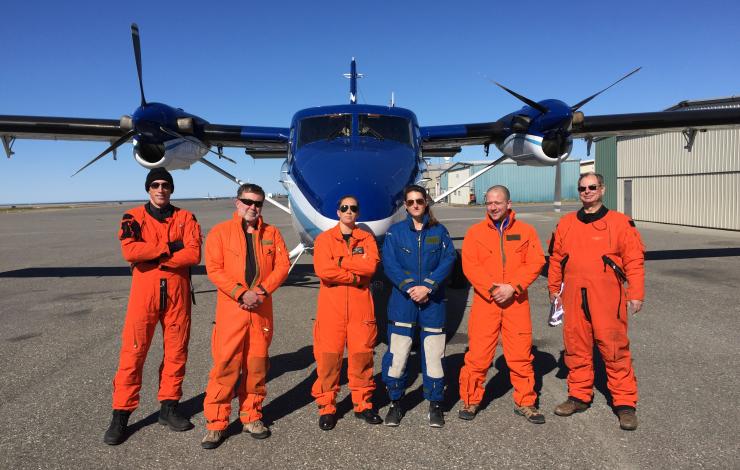
The PMEL Arctic Heat research team, including cooperative institute (JISAO) scientists, in front of NOAA Twin Otter during the first flight in June. From left to right: LT Alex Johnston, co-pilot; Dr Kevin Wood, lead scientist; LT Shanae Coker, aircraft commander; Leah Chomiak, Hollings Scholar; Alex Ekholm, WHOI engineer; Jeff Smith, scientific systems engineer.
September 10 – 20: The Arctic Heat Team has been making their way from Barrow, AK to Kotzebue on a specially-outfitted NOAA Twin Otter aircraft. Over the 10 day mission, the team is launching traditional atmospheric and oceanographic probes as well as the experimental Air-Launched Autonomous Micro-Observer (ALAMO) floats into the Chukchi Sea. Four ALAMO floats were deployed in June 2016 in the Chukchi and Beaufort Seas. These floats will continue to collect data on upper ocean temperatures throughout the year.
The team on this mission includes: Kevin Wood and Nick Bond from UW/JISAO and NOAA/PMEL, Woods Hole Oceanographic Institution’s engineer Alex Ekholm, and LTJG Kevin Doremus as the Aircraft Commander.
Watch a video of the team launching various floats during the first deployments on YouTube.
On September 3, after three months of collecting data in the Bering Sea, the two Saildrones have been safely recovered. The Saildrones each traveled almost 3000 nautical miles in 101 days. After arriving in Dutch Harbor, AK, the Saildrones were packed into a container and shipped to their home base in San Francisco, CA. Data from the tested technologies for fish and marine mammal acoustics are expected mid-September with preliminary analysis completed around the New Year.
This was a collaborative mission between the Pacific Marine Environmental Lab, Alaska Fisheries Science Center, Saildrone, Inc., Simrad AS/Kongsberg Maritime, Greeneridge Sciences, Inc, and Wildlife Computers.
Continue to follow the Saildrone on the Innovative Technology for Arctic Exploration page to learn more about upcoming events and preliminary results in the weeks and months to come.
The State of the Climate in 2015 report, published August 2016 in the Bulletin of the American Meteorological Society, provides a detailed update on global climate indicators, notable weather events and other environmental data. The report was compiled by 460 scientists, including several PMEL, JISAO and JIMAR scientists. These scientists contributed to sections on the global ocean carbon cycle, ocean heat content and arctic air temperature.
This year’s report has an emphasis on ecosystems, specifically how a changing climate impacts living systems. The report confirmed that 2015 beat 2014 as the warmest year (about 1.0°C warmer) since preindustrial times and that the Mauna Loa observatory recorded its first annual mean carbon dioxide concentration greater than 400 ppm. This year’s exceptional warmth was fueled in part by a nearly year-round mature El Niño event.
Greg Johnson, who co-edited the Global Ocean’s chapter, wrote a haiku summarizing Earth’s climate in 2015:
El Niño waxes,
warm waters shoal, flow eastward,
Earth’s fever rises.
Read the full report, press release and report highlights.
Presentation by Jim Overland (NOAA/PMEL) and Muyin Wang. (JISAO/UW)
There were extensive record Arctic temperature extremes in January and February 2016 that continued into April. For January, the Arctic-wide averaged temperature anomaly was 2.0 °C above the previous record of 3.0 °C based on four Reanalysis products.
Two regions of low geopotential height were seen as a major split in the tropospheric polar vortex over the Arctic. Warm air advection north of Alaska and central Eurasia reinforced the ridge that split the flow near the North Pole and contributed to the persistence. 2016 shows that there can be major Arctic contributions from midlatitudes.
Whether Arctic amplification feedbacks are accelerated by the combination of recent thinner, more mobile Arctic sea ice and occasional extreme atmospheric circulation events from midlatitudes is an interesting conjecture.
NOTE: Unfortunately, recording starts about 30 seconds after Jim started speaking.
YouTube Video: https://youtu.be/LCyoabJHOEM
Website: http://www.pmel.noaa.gov/arctic
PMEL scientists from the Ecosystems and Fisheries Oceanography Coordinated Investigations (EcoFOCI) program attended the first Principal Investigator meeting for the North Pacific Research Board (NPRB)’s five-year Arctic Integrated Ecosystem Research Program (Arctic IERP) in Anchorage, Alaska on June 20-23.
This historic Arctic Integrated Ecosystem Research Program will study the northern Bering and Chukchi Seas during spring through fall to better understand how changes in physical environmental drivers influence the structure and function of the biological system and access to subsistence resources. The EcoFOCI team (comprised of PMEL, AFSC, JISAO, and Bigelow Laboratory scientists) will lead the Oceanography and Lower Trophic Level Productivity portion of the program under the direction of Carol Ladd. The field seasons for this project are planned to begin in spring 2017 through the fall of 2019.
The goals of the meeting were to introduce the funded projects, discuss how these projects are connected, identify any gaps, come to a consensus on the overarching hypothesis for the integrated research, introduce PI's from other Arctic projects that may integrate with the Arctic IERP research, and discuss the framework for integration, data management, and communication/outreach during the project.



